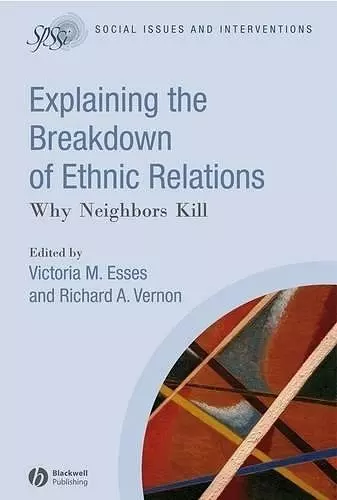Explaining the Breakdown of Ethnic Relations
Why Neighbors Kill
Victoria M Esses editor Richard A Vernon editor
Format:Hardback
Publisher:John Wiley and Sons Ltd
Published:11th Jul '08
Currently unavailable, and unfortunately no date known when it will be back

Written by an international team of renowned scholars, this volume addresses the multitude of factors that may lead to the deadly breakdown of ethnic relations. The book
• Draws on real-world case studies, such as Rwanda, Sudan, and the Second Palestinian Intifada
• Brings together original contributions and theoretical perspectives by a team of experts in psychology and related disciplines such as sociology and political science
• Identifies events and processes that can break down inhibitions against violence, and lead to mass killings and genocide
• Examines explanations that must be considered in making sense of past acts, and offers suggestions for interventions to prevent future repetitions
"This volume provides a striking overview of basic human motivations and societal conditions that can incite and perpetuate violence, both through the acts of individuals and the inaction of others" Linda R. Tropp, University of Massachusetts at Amherst
"Richard Vernon and Victoria Esses have brought together an outstanding group of contributors to focus on a contemporary problem, which has a long and dreadful history. I think Explaining the Breakdown of Ethnic Relations is one of the most exciting and innovative edited volumes to be published in recent years. I congratulate the editors for producing an extremely important and original contribution to the understanding of intergroup violence." Louis Penner, Wayne State University
“The chapters of this compelling volume brim with urgency and breadth of scholarship. The book does more than simply summarize, review and integrate and is characterized by a real vibrancy and force which makes reading it as engaging a task as the topic itself is painful. There are points that one might contest, and gaps one might like to see filled, but such debate is the editors’ intent. This book will command a very broad readership and will attract many plaudits. The real tragedy, of course, is that such a volume is so very necessary.” Alex Haslam, University of Exeter
ISBN: 9781405170598
Dimensions: 231mm x 155mm x 23mm
Weight: 544g
296 pages